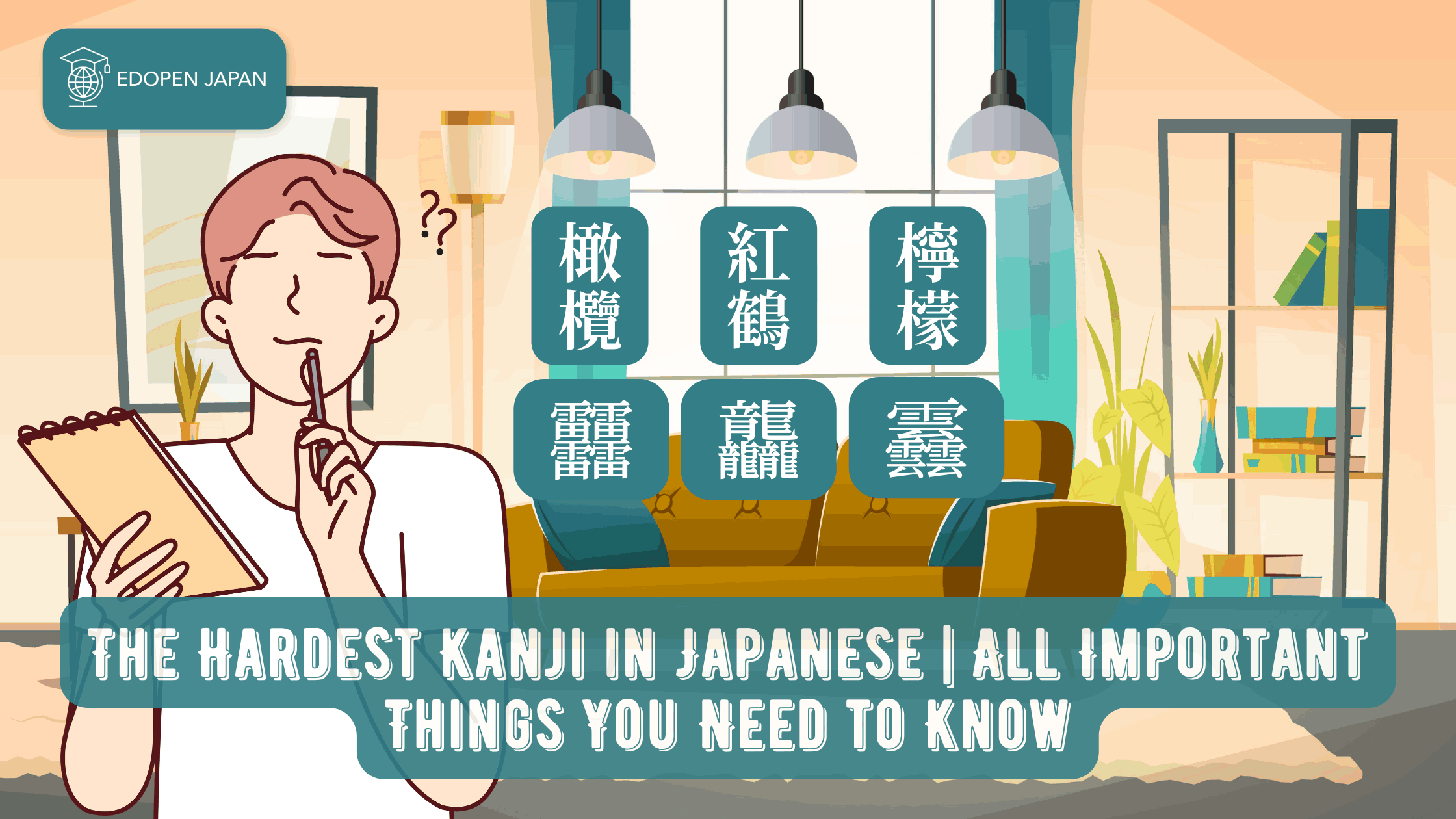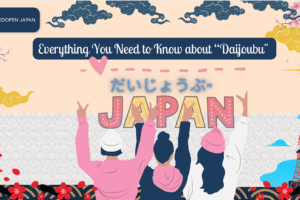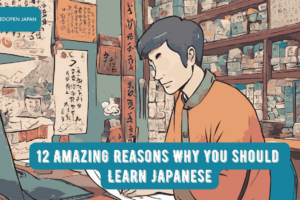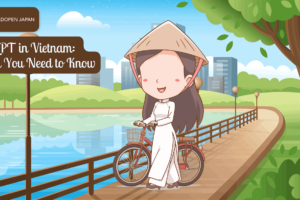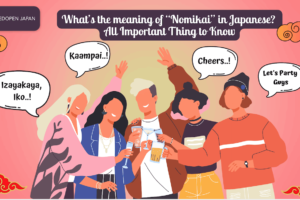Learning Japanese kanji can be quite challenging. Kanji characters have a significant impact on the Japanese language, and they are commonly used in the daily lives of the Japanese. Can you tell me which ones are considered the most difficult in the world? Kanji characters have a significant impact on the Japanese language, and they are commonly used in the daily lives of the Japanese.
Typically, a person who has grown up speaking Japanese knows around 3,500 to 4,000 kanji. While “kanji” can be replaced with hiragana or katakana, doing so can make a sentence more difficult to comprehend.
For instance, how would one differentiate between 橋 (はし), 箸(はし) and 端(はし) while writing them in Hiragana? Thus, it is crucial to learn “kanji”. According to our Japanese instructor, the most frequently asked question by the students is: What is the most difficult kanji to learn? In this piece, we’ll unveil the most intricate Japanese “kanji” composed of all elements.
In addition, if you are currently studying Japanese and seek comprehensive information about learning Japanese writing, speaking, and the other important aspects for everyday life in Japan, explore our all-encompassing recommendations below!
Read also:
10 Simple & Easy Steps to Learn Japanese for Beginners
Why Learn Japanese? 12 Amazing Reasons & Benefits
How to Learn Japanese Speaking? 10 Simple Steps
Contents
A Brief Overview of Japanese Kanji
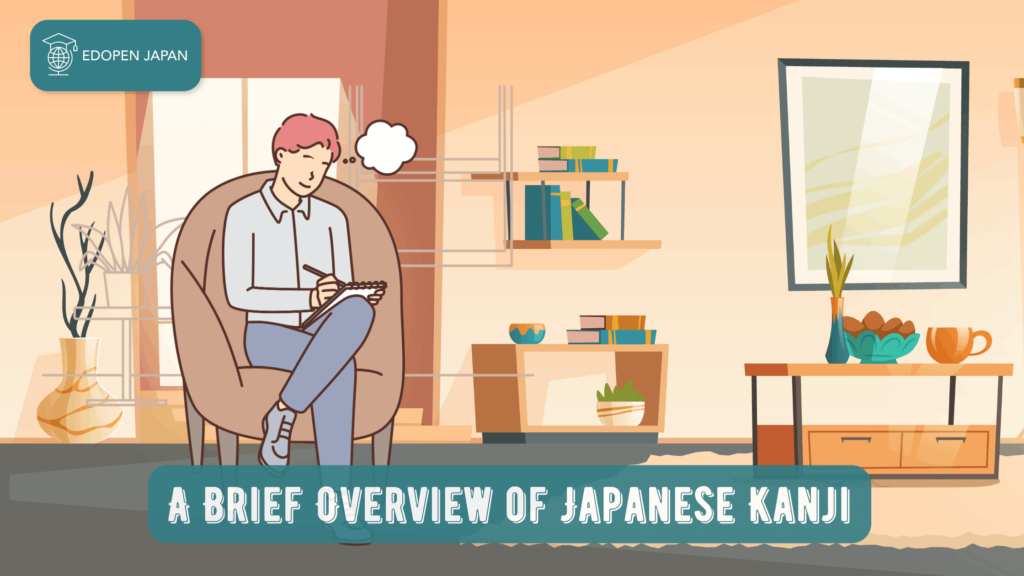
As you dive deeper into the Japanese language, you may wonder what the most difficult kanji are. In case you don’t know, “kanji (漢字)” are Chinese characters used in the modern Japanese writing system alongside hiragana and katakana. Japanese has three alphabets and over 2000 kanji characters to memorize.
Before we proceed, it’s worth noting that kanji that consist of the same character two, three, or four times are referred to as “rigiji (理義字)”. Knowing this is crucial since a single kanji character can assume a different meaning when replicated or merged with another. Test your memory by attempting to memorize the following kanji.
The Unknown Kanji in Japanese
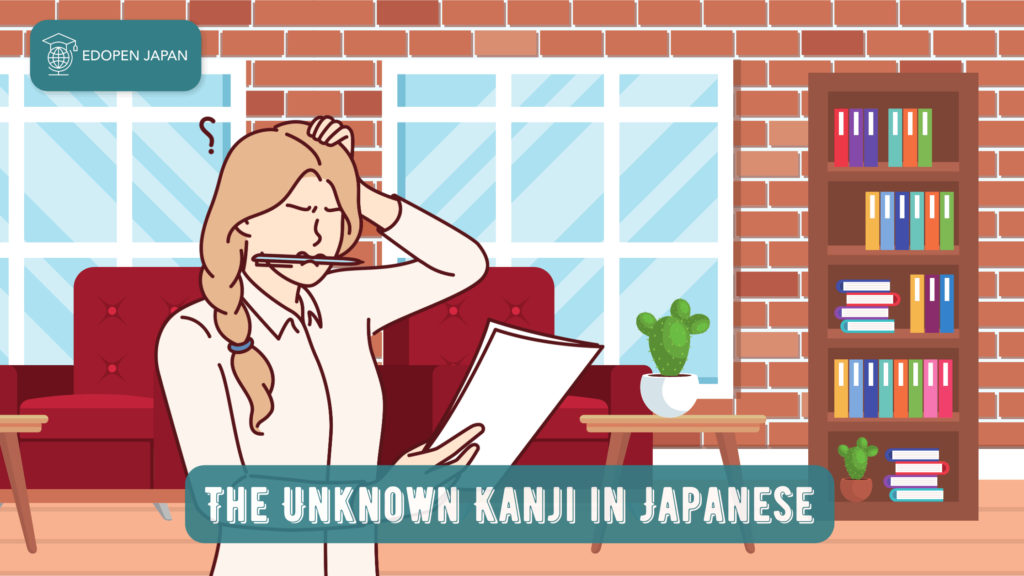
Most People Think They Can Write, But Cannot
In Japanese, certain commonly used words in both spoken and written communication often prove challenging to accurately transcribe. As they hover pen-in-hand, prepared to write, they may suddenly freeze and scrunch up their faces in a moment of confusion, surprised by their inability to capture the intended words on paper.
Native speakers may believe they can jot them down with ease, only to encounter unexpected difficulty when attempting to do so. As they hover pen-in-hand, prepared to write, they may suddenly freeze and scrunch up their faces in a moment of confusion, surprised by their inability to capture the intended words on paper.
1. 挨拶 (あいさつ – Aisatsu)
Stroke Count: 19
Meaning: greeting
Aisatsu is a word you’re likely to come across often in Japanese schools and workplaces due to its frequent use. The kanji for aisatsu (挨拶) is complicated due to the unique nature of its characters.Specifically, the characters 挨 (ai) and 拶 (satsu) are almost exclusively paired together. As far as I can tell, there is no other kanji pairing that includes either of these characters.
2. 醤油 (しょうゆ – Shouyu)
Stroke Count: 25
Meaning: soy sauce
Although soy sauce is essential in Japanese cuisine, writing its kanji is not always easy. Many Japanese speakers find this and other kanji challenging and unfamiliar. Therefore, there is an alternative pair of kanji that is sometimes used, the simplified version of 醤油 being 正油 (しょうゆ).
3. 贅沢 (ぜいたく – Zeitaku)
Stroke Count: 25
Meaning: luxurious, expensive, spoiled
Many Japanese vocabulary words are easily recognizable but difficult to write. The previous “aisatsu (挨拶) and “shouyu (醤油)” are good examples of this phenomenon. This ubiquity perhaps contributes to the false impression that people can write the entire word with ease. Another such word is “zeitaku (贅沢)”, which incorporates the kanji 沢 (たく、さわ – swamp), a character that most people can write.
The Little Complicated Kanji to Memorize
Some kanji are excessively intricate to be memorized easily. By mastering them, you are certain to be regarded as a kanji expert. Get them below!
1. 鬱 (うつ – Utsu)
Stroke Count: 29
Meaning: depression
鬱 (utsu) is among the most challenging kanji to write, making it popular among Japanese people competing with friends to demonstrate their writing skills. It frequently appears alongside the character 憂 (ゆう – yu) in the word 憂鬱 (ゆううつ – yuutsu), which means sad, gloomy, or melancholy.
This term is widely used, and it’s common to see it written in hiragana both by hand or on a computer. The single character with 29 strokes is not only challenging to recall but also requires a great deal of skill to write beautifully and proportionally.
2. 薔薇 (ばら – Bara)
Stroke Count: 32
Meaning: Rose
Like 鬱 (うつ), 薔薇 is a challenging kanji that many people encounter frequently but struggle to write accurately. Despite being able to recognize the characters, most cannot reproduce them themselves. The composition of the characters is complex, particularly in the first character, 薔, which means Persicaria hydropiper (water pepper).
The upper portion of the character sits on 回 (turn), which is not a typical feature of kanji. Although it’s typically written using kanji or katakana, Hiragana is also a common writing form. Therefore, the decision of which form to use depends solely on personal preference.
3. 檸檬(れもん – Remon)
Stroke Count: 35
Meaning: Lemon
It is generally written in katakana form as レモン, with 35 strokes. Writing it in lowercase can make the details of the strokes difficult to discern. If 檸檬 is used instead of just レモン, the product takes on a more distinguished and local appearance since the word is written in kanji rather than katakana.
Replacing the katakana form with the kanji form can convey to consumers that the lemons utilized in the product were grown locally, that the product is a traditional item of the region, or signifies that the product was produced using traditional Japanese methods.
Most People Do Not Know That Kanji is Actually Exist
“There’s a kanji for that?” may be the common response when discussing these characters.
1. 紅鶴(べにづる、フラミンゴ – Benizuru / Flamingo)
Stroke Count: 30
Meaning: Flamingo
This is not a complex kanji, but rather one that is virtually unknown. It is unlikely that anyone in Japan would attempt to write the word “flamingo” in kanji.The word is typically written in the katakana form フラミンゴ.
However, the kanji form is not difficult to understand in terms of its individual characters. 紅 (べに、くれない、こう、く – crimson) and 鶴 (つる、かく – crane) are both simple characters taught in elementary school. But apart from the fact that nobody knows about the kanji for “flamingo,” this kanji is complex because it is also categorized as “ateji (当て字)”.
“Ateji (当て字)” refers to kanji characters in Japanese that have a pronunciation unrelated to their traditional sounds. These characters are often used for imported words in the Japanese language. In this situation, the traditional pronunciation is “Benizuru (べにづる)”, while the pronunciation of “Ateji” is “Flamingo (フラミンゴ)”.
In this situation, the traditional pronunciation is “Benizuru (べにづる)”, while the pronunciation of “Ateji” is “Flamingo (フラミンゴ)”.However, “Benizuru (べにづる)” is not a term commonly used to refer to a flamingo in modern Japanese, so it is likely that the kanji 紅鶴 essentially means “flamingo (フラミンゴ)”.
2. 橄欖 (かんらん、おりーぶ – Kanran / Olive)
Stroke Count: 42
Meaning: Olive
Here’s a Japanese character that many Japanese speakers are not familiar with and is very challenging to remember. The word “olive” is consistently written in katakana as オリーブ in Japanese. It is essential to note that this character can be pronounced in two different ways: かんらん if you use traditional character sounds, and オリーブ if you read it as “ateji (当て字)”.
The Hardest Kanji You Absolutely Need to Know

Level 1. Dō(48 strokes)
First on the list of kanji in the Morohashi dictionary is a 48-stroke character called Dō. It consists of the kanji “Cloud (雲)” repeated four times and means “Widespread Clouds”, which is somewhat logical.
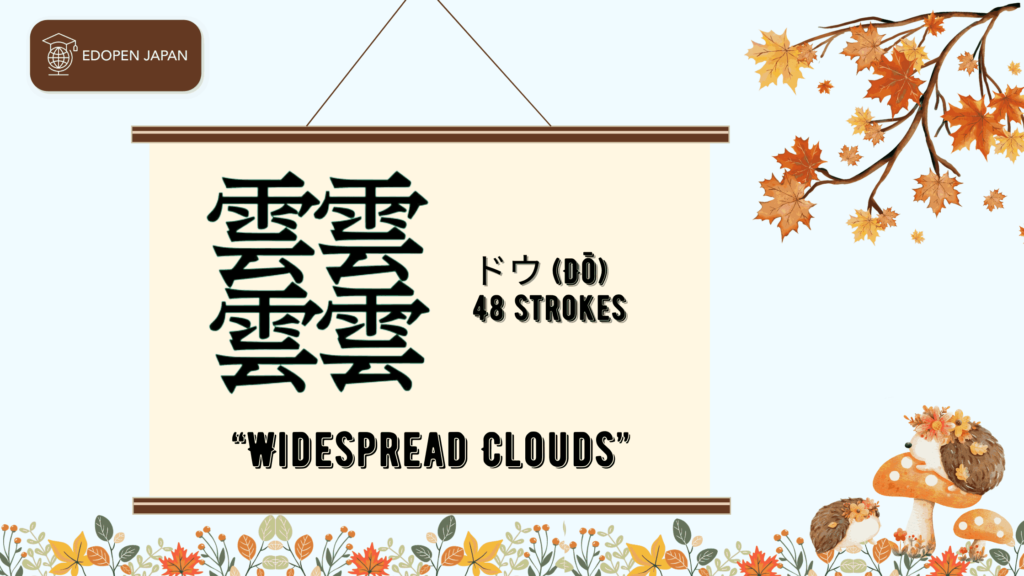
Level 2. Tō (48 strokes)
Tied for 5th place is another 48-stroke monstrosity: Tō. It’s a character consisting of the same kanji “Dragon (龍)” repeated three times, meaning “A Moving Dragon” which sounds somewhat sensible.
The reason behind the usage of three dragons instead of another element that indicates “movement” remains a mystery to ancient scholars.
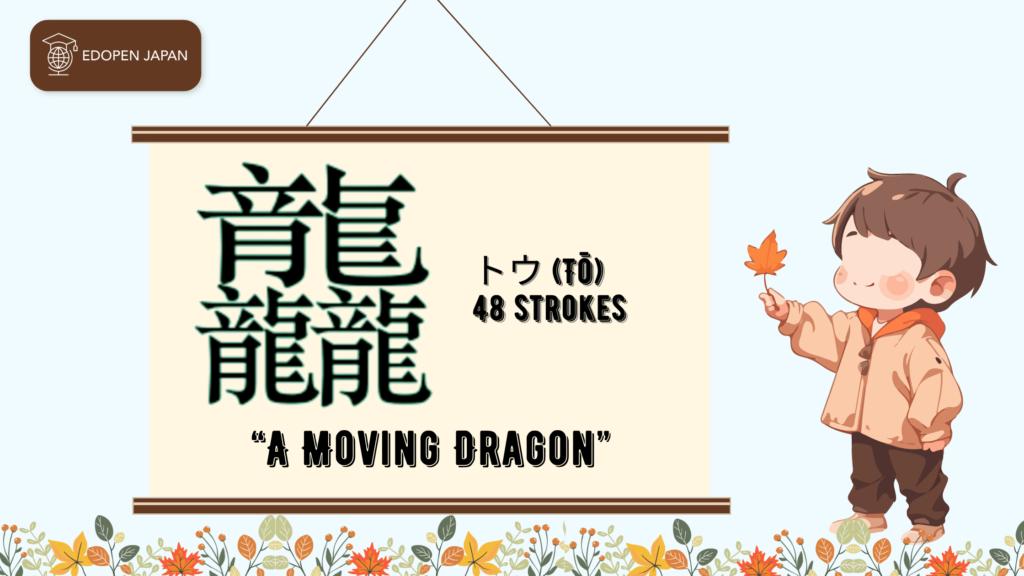
Level 3. Hō / Byō (52 strokes)
Number three on the list is a kanji known as hō/byō. It has 52 strokes and consists of the kanji for “Lightning (雷)” repeated four times, and its meaning is “lightning”.
It is not clear why writing the same kanji four times is necessary to convey the same meaning, but it might be used for describing especially intense lightning/thunder.
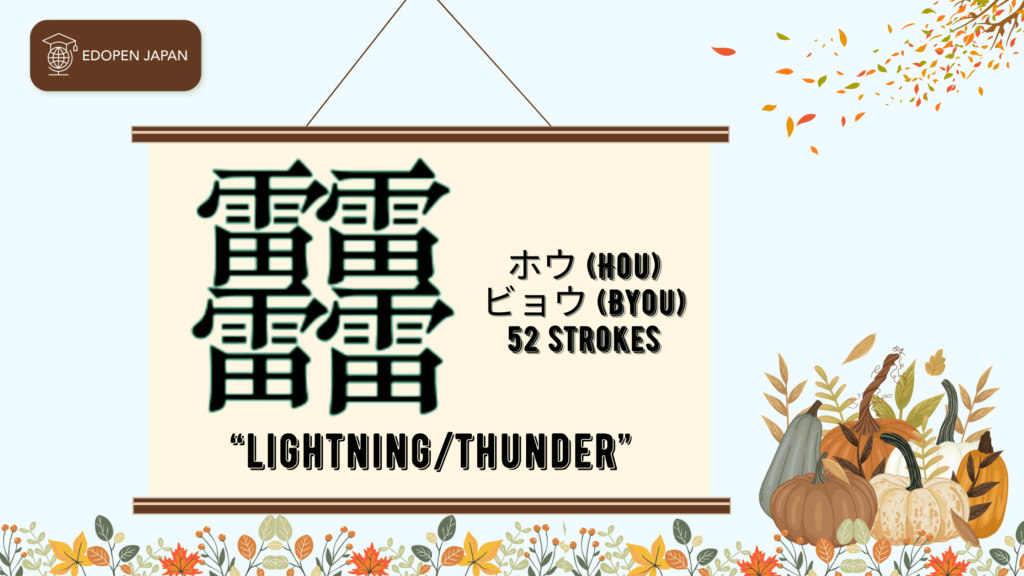
Level 4. Sei (64 strokes)
“Sei” is yet another “Rigiji”, made up of the same kanji “Interested (興)” four times. This kanji is perhaps one of the most interesting on the list, as according to many Japanese dictionaries, it has no meaning.
Many have tried to deduce the meaning as “deeply interested” but there is no concrete and verified definition. “Sei” also has 64 strokes meaning it ranks highly on the list of Japanese characters with many strokes.
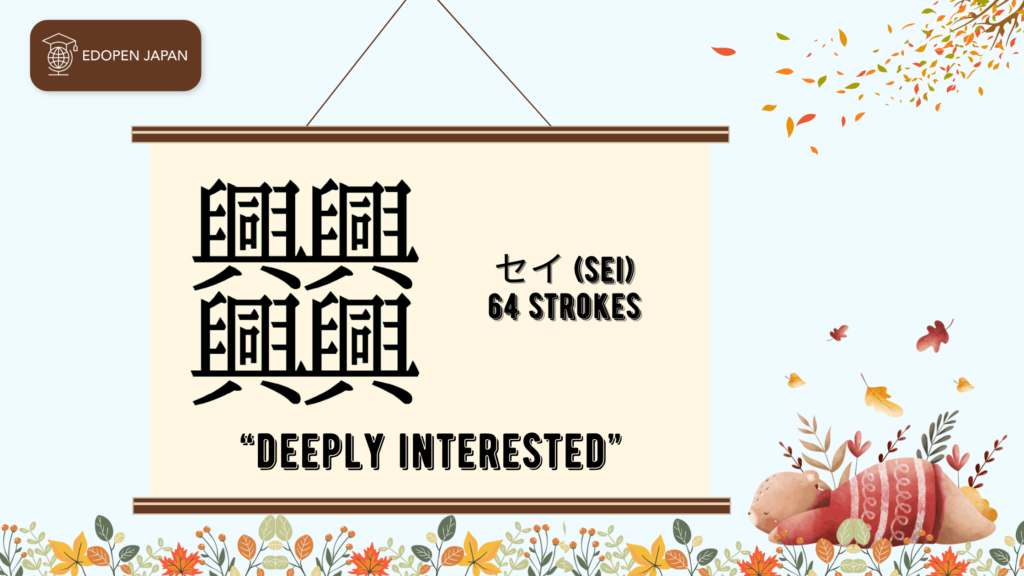
Level 5. Tetsu / Techi (64 strokes)
It is “Tetsu or Techi”, the other 64-stroke demon kanji, which has a definition “Many words, verbose”. We have to say that’s a fitting definition, seeing as just this one kanji alone already has way too many words inside it.
Just like the others in the top 5, tetsu/techi is a rigiji too, made up of the same kanji “Dragon (龍)” four times.
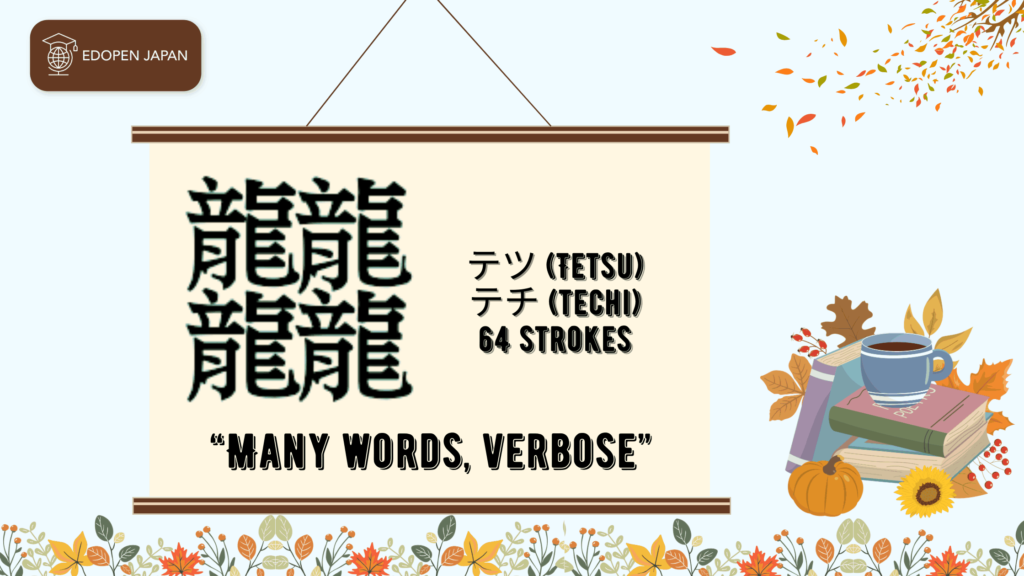
The Most Hardest Kanji Ever
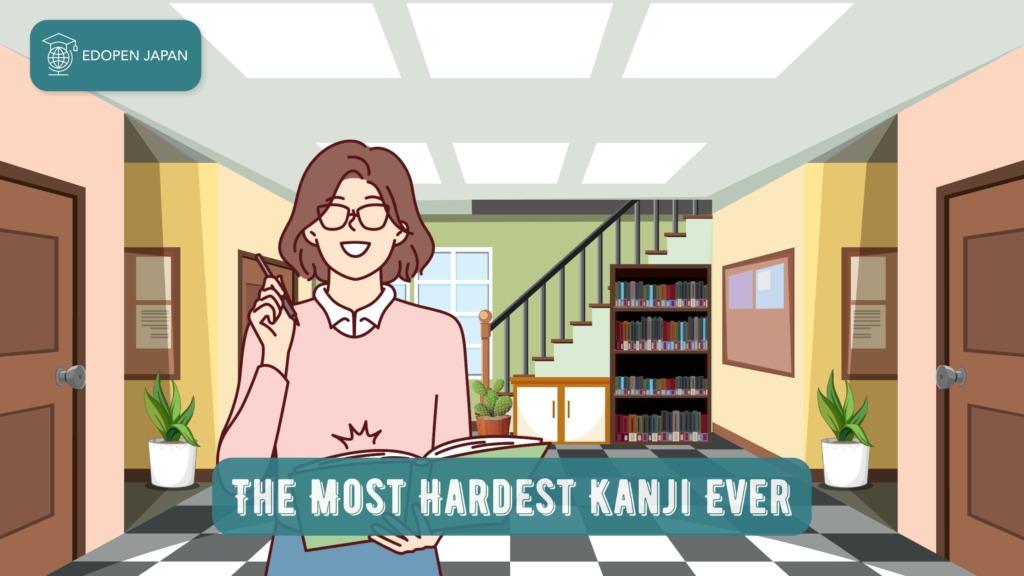
1. たいと (Taito) – 84 Strokes
Taking it to the next level is our next character, which uses six different kanji. It has 84 strokes and can be used as a person’s title.
It is exclusively found in someone’s surname and is made up of the kanji for “cloud (雲)” and “dragon (龍)”.
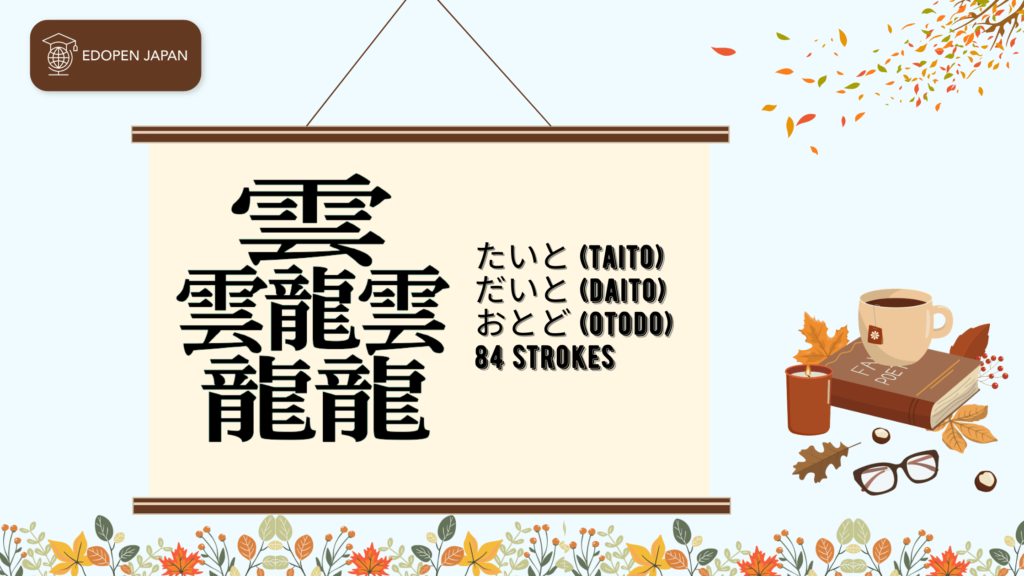
2. ぼんのう (Bonnō) – 108 Strokes
The final character on the list is the most challenging, as it requires 108 strokes. In Buddhism, “Bonnō” refers to mental states that can cloud the mind and lead to harmful actions. Japanese Buddhists associate 108 bonnō with the number of strokes in the kanji – 108 strokes.
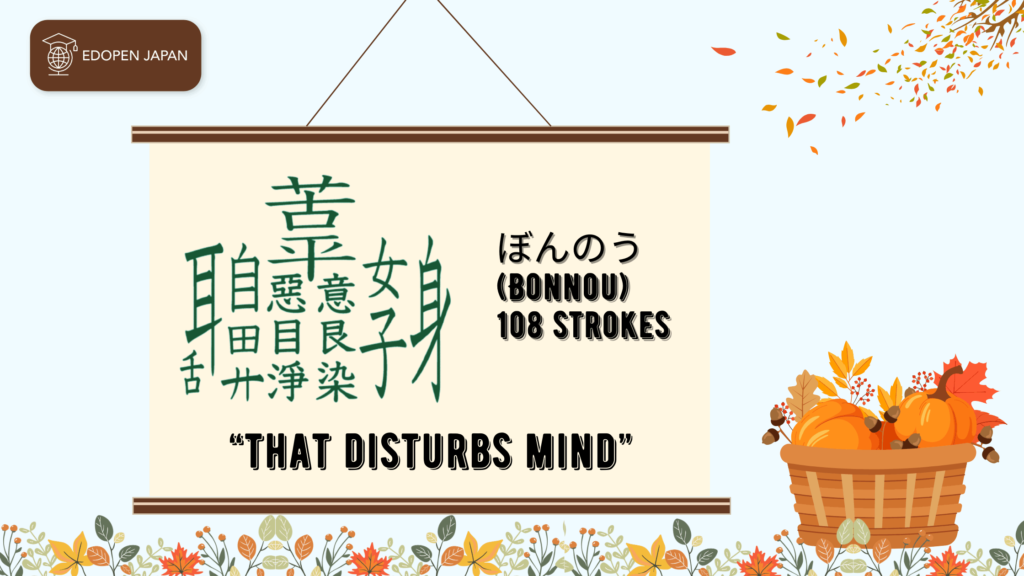
In today’s society, bonnō is written as “煩悩,” which roughly means “things that disturbs the mind”. It’s unlikely that you’ll need to learn these kanji, but they may inspire you during a late night of studying.
What was that? I’m sure you find “kanji” in the Japanese language fascinating. After learning some of the most complex ones, everything else should seem less intimidating. This will hopefully make studying Japanese more enjoyable for you. Good luck and have fun learning!
Summarize
To summarize, let’s go over the information again using the following points. Please share your comments below in the comments section!
- Kanji is an essential component of the Japanese language, with widespread use in the daily lives of Japanese individuals. Kanji characters can be replicated 2, 3, or 4 times, which is called “rigiji (理義字)”. It’s important to know this because a Kanji character’s meaning can change when replicated or combined with another character.
- Some Hard Kanji have “ateji (当て字)” which refers to any kanji with a pronunciation that has almost nothing to do with the traditional sounds of the characters.
- The toughest Kanji characters to learn are “taito” and “Bonnou”. These two are quite challenging, but they have significant meanings. Learning them might help you study Japanese.

